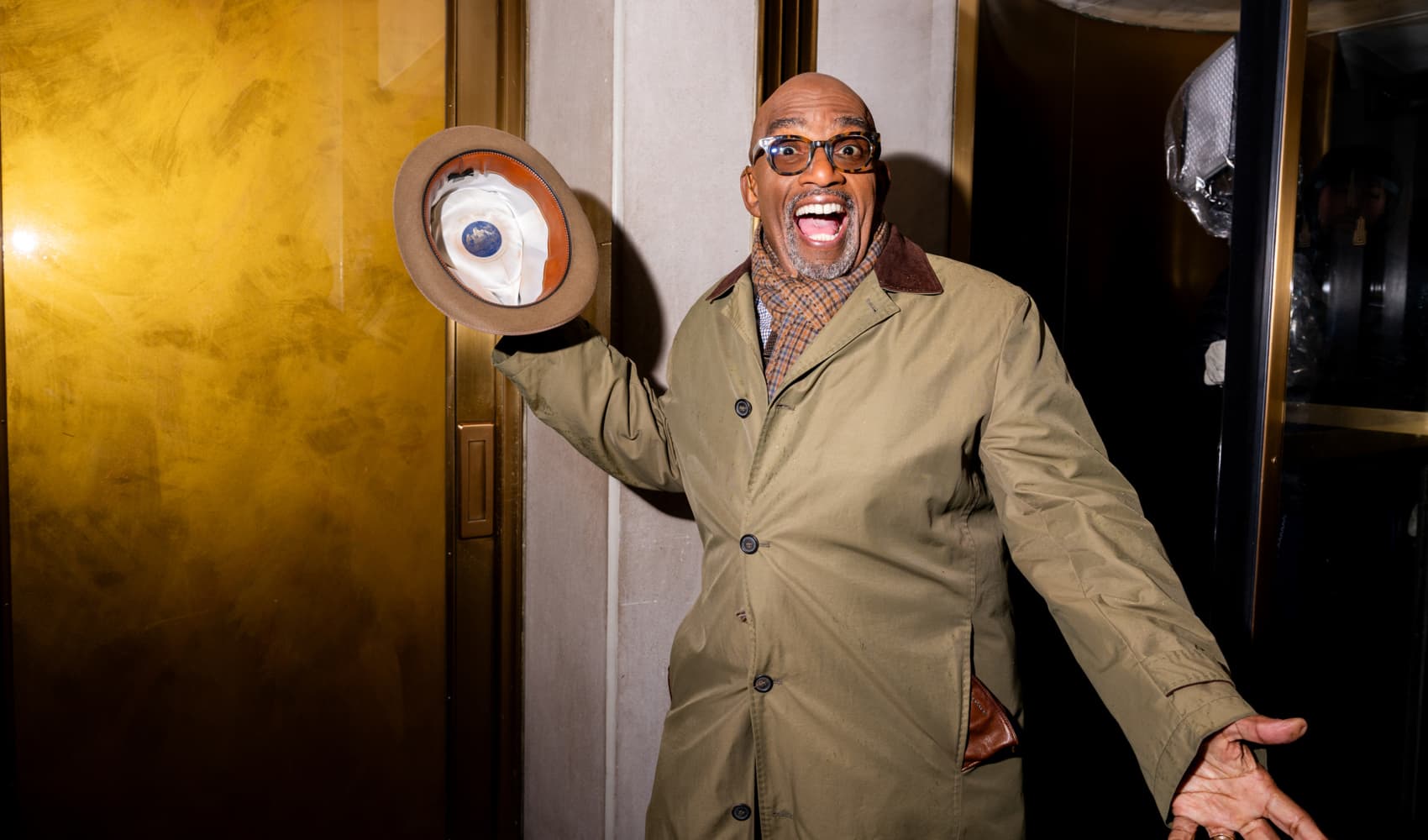
The wind whips embers while firefighters battle the fire in the Angeles National Forest near Mt. Wilson as the wildfires burn in the Los Angeles area, during the Eaton Fire in Altadena, California, U.S. January 9, 2025.
- GOES Health was originally created for remote travelers, but it's increasingly become an app for people stuck in climate disaster zones.
- The company's technology chief lives in Los Angeles and suddenly found himself needing to use the app he helped create to navigate the fires.
- Since Jan. 6, a day before the LA fires broke out, GOES has seen about an 800% spike in usage in the area, the company said.
For almost two years, Viktor Makarskyy has been working on an app that serves as a digital survival kit to help people in disaster zones, which are getting more numerous seemingly by the day given the pace of climate change.
He never imagined his work and personal life would collide in such a profound way.
On Wednesday night, Makarskyy was flying home to Los Angeles from an anniversary trip with his wife in the Cascade Mountains, in the Pacific Northwest. An evacuation order for the Sunset Fire had already been issued extending to just a few blocks from their apartment.
We've got the news you need to know to start your day. Sign up for the First & 4Most morning newsletter — delivered to your inbox daily. Sign up here.
Makarskyy was terrified that the fire would reach their home before they could rescue their cat and collect critical belongings.
"It's one thing to see pictures online," Makarskyy told CNBC in an interview Friday, "it's another thing to see it out the plane window and to have this multisensory experience of your cabin smelling like smoke as you land. It was like entering a war zone."
Makarskyy is the head of technology at GOES, a startup founded in 2021 with a focus on providing critical health advice and services, mostly in remote areas. Aid workers and intrepid travelers can download the GOES Health app and get quick localized tips on how to deal with bug and animal bites, altitude illnesses, rashes and a host of other challenges.
Money Report
Hikers can gauge hypothermia risk, and backpackers can plan out how to prepare for a heat wave or look up how to temporarily set a broken bone. All content is written or approved by wilderness medicine doctors, and everything can be accessed offline other than real-time weather and the app's wildlife risk index.
Increasingly, GOES, which stands for Global Outdoor Emergency Support, is becoming relevant in a much more widespread way, as people in urban environments have to deal with sudden disaster due to hurricanes, tornadoes and catastrophic fires. Since Jan. 6, a day before the LA fires broke out, GOES has seen about an 800% spike in usage in the area, and over the past two weeks the number of new users in California has tripled, the company said.
As of Monday, the massive blazes across LA had killed at least 24 people, obliterated whole neighborhoods and burned thousands of homes and structures. No cause has been identified for the largest fires.

Makarskyy said he uses GOES to check air quality, national alerts, wildfire preparedness guides and more. Back at home, he said, he was surprised to see that although one of the most widely used weather apps showed the air quality around Los Angeles International Airport to be "moderate," when he viewed a hyperlocal, more precise air quality measurement using GOES, it showed the air quality to be much worse.
"As the developer of this app, I knew it offered exact latitude and longitude," he said.
GOES is far from alone in seeing a spike in usage due to the rise in disasters. The Watch Duty app, founded in 2021 and developed by a nonprofit group, has become practically ubiquitous in the LA area since the fires erupted. It was the top free app on iOS for much of last week and was still in the top five on Monday, providing LA residents with a precise reading on where fires are burning and spreading, which neighborhoods are in evacuation zones and the location of power outages.
In a post on X on Friday, Watch Duty wrote, "Our systems remain 100% operational while our radio operators sleep in shifts and our engineers are throwing everything they have at it to sustain up to 100,000 requests per second with an average response time of <20 ms."
Watch Duty was developed by firefighters, dispatchers and first responders specifically to disseminate information related to fires. GOES, by contrast, stumbled into the fire safety market.
According to the GOES app's launch announcement in 2023, Dr. Grant Lipman, a former professor at Stanford Emergency Medicine and director of its wilderness medicine fellowship, started the company "after treating a hiker in critical condition due to a rattlesnake bite" and seeing the need "to make wilderness medicine more accessible."
'The outdoors is changing'
GOES co-founder and CEO Camilo Barcenas spent years in the health-care space and worked for four years overseeing technology at the Stanford Adult Hospital. In 2019, he and his team began working on the GOES project, interviewing people in North America, South America, Asia, Europe and the Middle East about what would have made them feel safer and more prepared when traveling off the grid.
Their realization, he said, was that health care was "so broken systematically," that the only way to improve is if people learn to take care of themselves first.
"We made this because we believe everyone should have this," Barcenas said. "The outdoors is changing, and we need to be able to understand what these risks are so we can do better."
Barcenas said that when Hurricane Helene hit North Carolina in September, he flew in to inform residents and aid groups about how they can use the platform. It's become increasingly clear, he said, how useful the app can be when climate disasters strike.
"The LA wildfires highlight an acceleration of what we've been tracking: the democratization of wilderness medicine for urban survival," Barcenas said. "When environmental emergencies strike, traditional emergency services and health-care facilities often become overwhelmed or inaccessible."

Before arriving back in LA, Makarskyy said, he prepared for his return by checking national alerts within GOES, such as high-wind advisories, air quality and the location of wildfires. Each alert came with access to content written by wilderness medicine doctors on preparation and mitigation techniques.
He read up on "what to do in breathing problem scenarios" related to those alerts. He said he learned that N95 masks are "the only thing that can protect against particulates that are that fine, that small."
"So rather than buying common surgical masks," Makarskyy said, "I went ahead and bought the right product for us to keep our lungs safe in this environment."
Makarskyy said he and his wife were fortunate not to have to evacuate. The fires were far enough away that they were safe but close enough that on Friday morning they woke up to ash coating their car. The closest fire had been contained. Their cat was safe with them.
The GOES app has some features that are free. Users can check on air quality and sunburn risk in their location and see if there's any extreme weather advisory. For premium access, which includes pocket safety guide information, subscribers pay $6 a month or $36 a year.
Barcenas said there are a lot of new features on the way and that the app has already evolved significantly since launching less than two years ago.
"GOES was originally developed for outdoor adventurers to prepare for trips and manage wilderness medical emergencies with offline, visual first-aid guides," Barcenas said. "Now, we're seeing urban residents using it to understand their outdoor health risks and navigating emergencies during environmental crises."
WATCH: California wildfires will be a $20 billion plus loss for insurers: Wells Fargo's Elyse Greenspan






